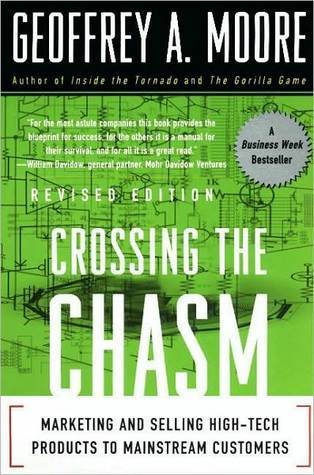More on this book
Community
Kindle Notes & Highlights
Read between
September 9 - October 8, 2018
by noting technological changes do not live in isolation but rather come under the influence of changes in surrounding technologies as well. In the early 90s it was the sea change
“God loves a sailor, but he has to row for himself.” And in that act of rowing the work is huge
touch with their customers and the other participants that make up the PC marketplace. The standard we tried to set at RMI was one of education not promotion,
when Crest promises you whiter teeth, that is a continuous innovation. You still are brushing the same teeth in the same way with
basis for conservatives to want to do business with them. They must understand that conservatives do not have high aspirations about their high-tech investments and hence will not support high price margins. Nonetheless,
this market to the Far East is testimony not so much to the cost advantages of offshore manufacturing as to the failure of onshore product planning and marketing imagination. Many Far East solutions today still bring
discovered rather than known at the time of installation implies, in turn, that product flexibility and adaptability, as well as ongoing
that in the high-tech buying process, word of mouth is the number one source of information
The key to moving beyond one’s initial target niche is to select strategic target market segments to begin with. That is, target a segment that, by virtue of its other connections, creates an entry point into a larger segment.
Make a total commitment to the niche, and then do your best to meet everyone else’s needs with whatever resources you have left over.
The answer is that when you are picking a chasm-crossing target it is not about the number of people involved, it is about the amount of pain they are causing.
The size of the first pin is not the issue, but the economic value of the problem it fixes is. The more serious the problem, the faster the target niche will pull you out of the chasm.
The bowling pin model allows you both to focus on the immediate market, keeping the burn rate down and the market development effort targeted, while still keeping in view the larger win.
Success through subtraction is the key lesson here.
the companies who failed had overdesigned for the target market because they were hedging their bets. Ironically, in the act of trying to reduce their market risk, they actually increased it.
When markets go mass, platforms have the advantage. Because they can participate openly in many value chains at the same time, they can be taken up in multiple segments simultaneously.
“If you don’t know where you are going, you probably aren’t going to get there.”
You need to understand that informed intuition, rather than analytical reason, is the most trustworthy decision-making tool to use.
New approach: With the new product how does the end user go about the task? • Enabling factors: What is it about the new approach that allows the user to get unstuck and be productive? • Economic rewards: What are the costs avoided or benefits gained?
Target customer: Is there a single, identifiable economic buyer for this offer, readily accessible
it were easy, someone else would have done it. Indeed, the fact that it is hard will create a barrier to entry in your favor once you have stepped up to the solution.
Chasm-crossing is not the end, but rather the beginning, of mainstream market development. It is important that we have additional follow-on niches that can be lucratively addressed.
The enemy in the chasm is always time.
Recap: The Target Market Selection Process
Develop a library of target-customer scenarios.
whole product marketing,
Theodore Levitt’s The Marketing Imagination,
Bill Davidow’s Marketing High Technology.
Generic product:
Expected product:
Augmented product:
Potential product:
the marketing battle takes place at the level of the generic product—the
But in every case, they are preferring the superior product, if you look at the whole product.
Pragmatists evaluate and buy whole products.
The single most important difference between early markets and mainstream markets is that the former are willing to take responsibility for piecing together the whole product (in return for getting a jump on their competition), whereas the latter are not.
winning the whole product battle means winning the war. And, because perception contributes to that reality, looking like you are winning the whole product battle is a key weapon to winning the war.
the simplified model there are only two categories: (1) what we ship and (2) whatever else the customers need in order to achieve their compelling reason to buy.
every additional new target customer will put additional new demands on the whole product. That is, the total sum of products and services needed in order to get the desired benefit changes any time you change the value proposition.
each opportunity has very real support costs.
Lawson decided that it had the advantage (this is a form of optimism that can only be built in the Midwest—it has something to do with the winters).
Commitment to focus is the critical success factor for crossing the chasm,
They don’t say no, in other words; they just don’t say yes. Talk about extended sales cycles!
accelerate the formation of whole product infrastructure within a specific target market segment.
These types of alliances can often be readily initiated and managed at the product marketing manager level.
Recap: Tips on Whole Product Management
Competition, therefore, becomes a fundamental condition for purchase.
Creating the competition is the single most important marketing decision made in the battle to enter the mainstream.
There are four domains of value in high-tech marketing: technology, product, market, and company.
the mainstream is dominated by generalists who are more interested in market leadership and company stability than in the bits and bytes or speeds and feeds of particular products.


